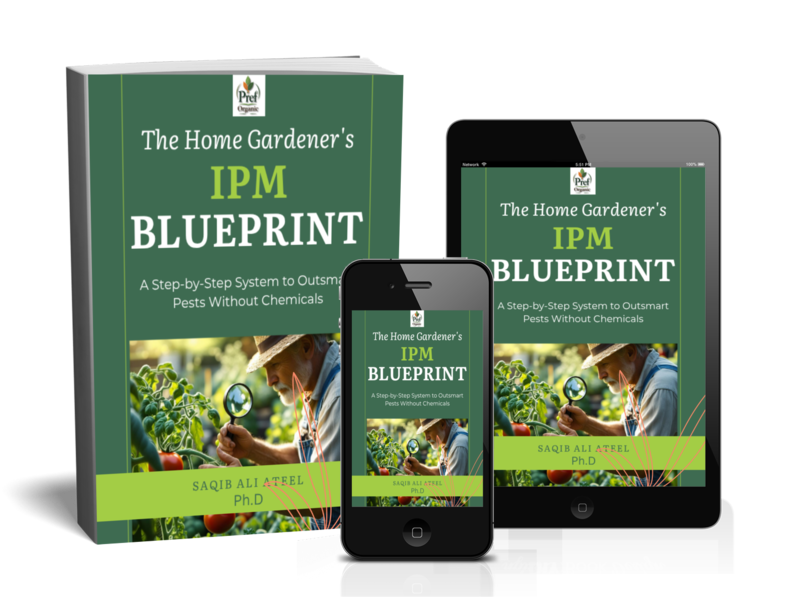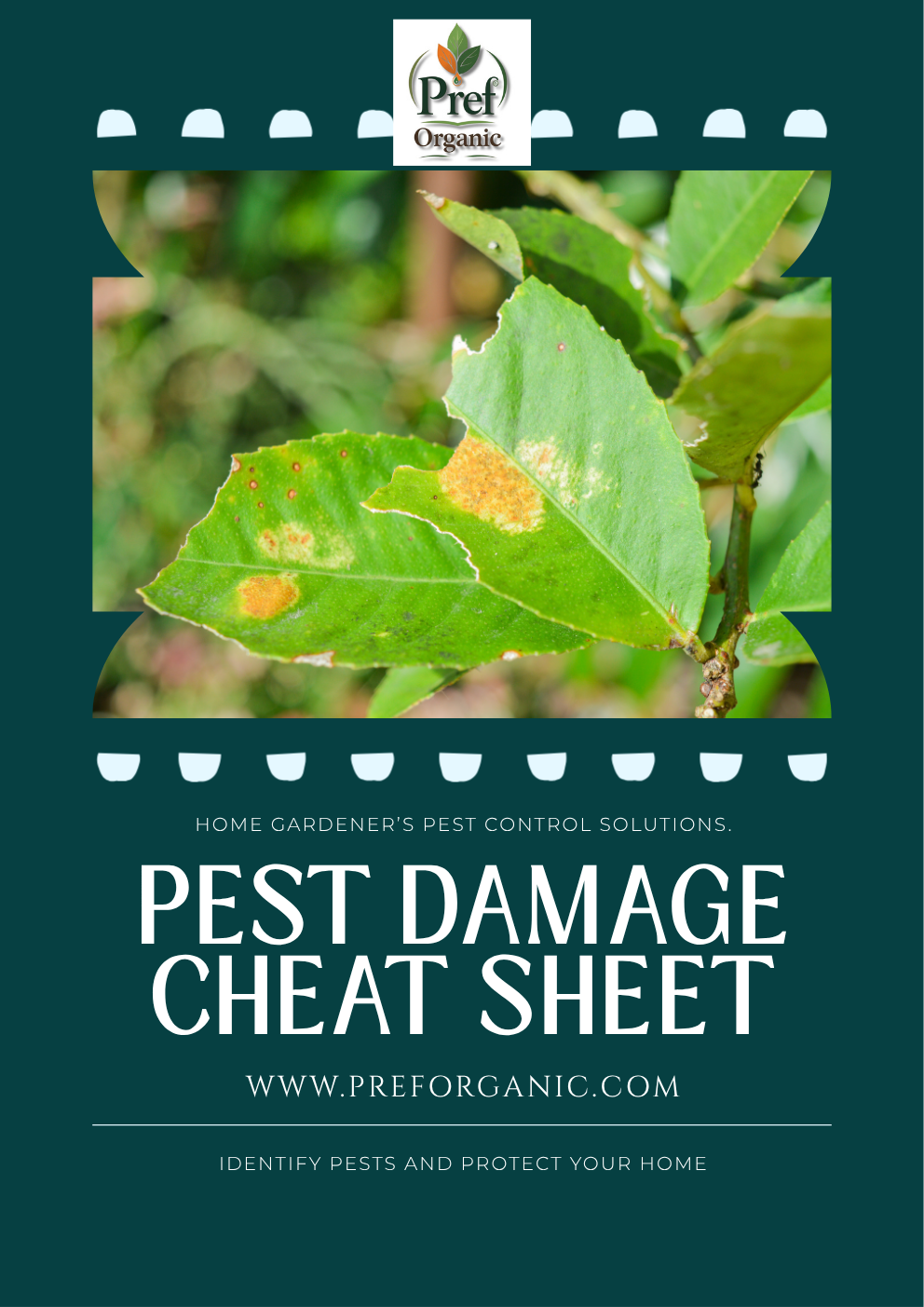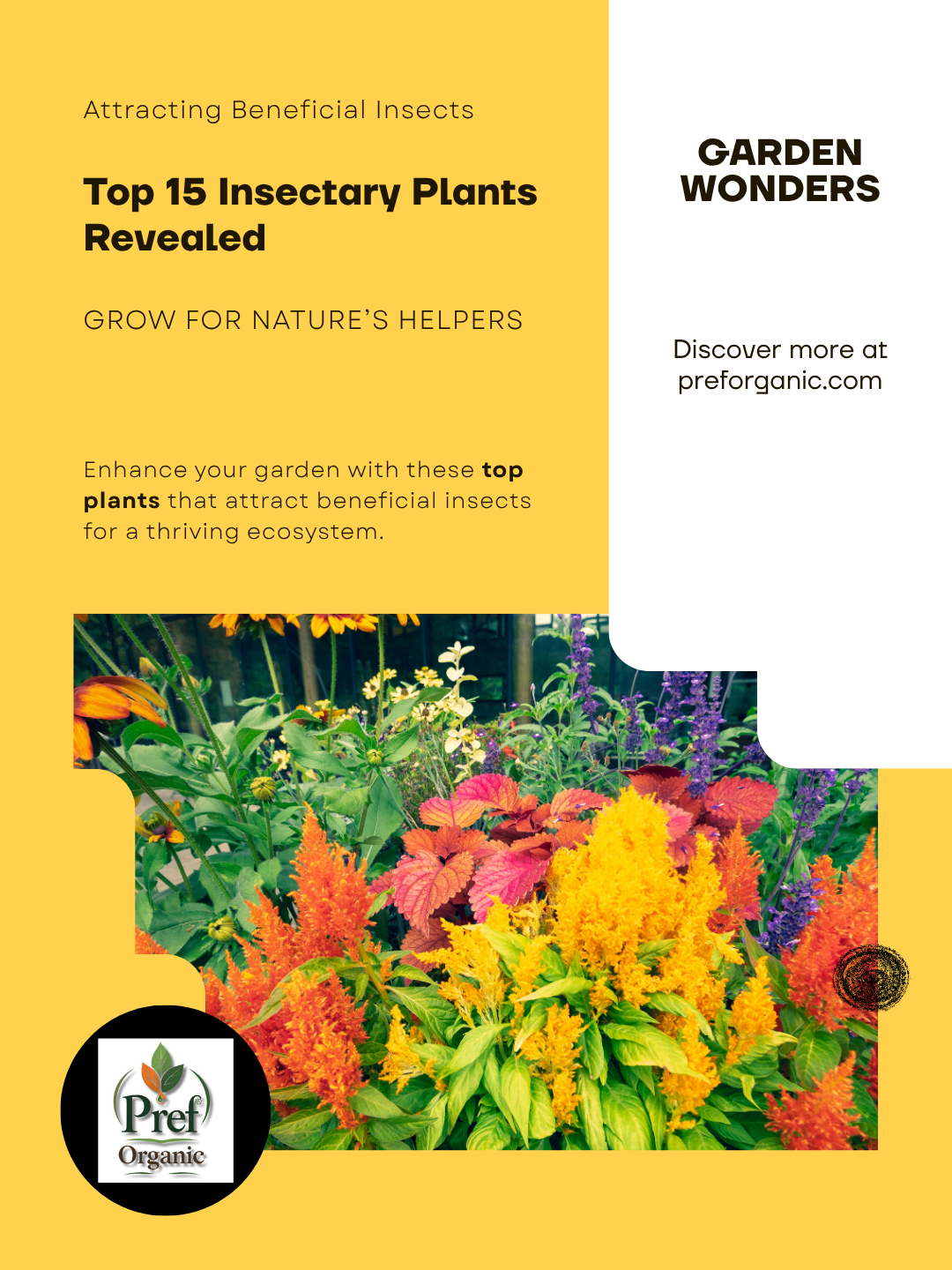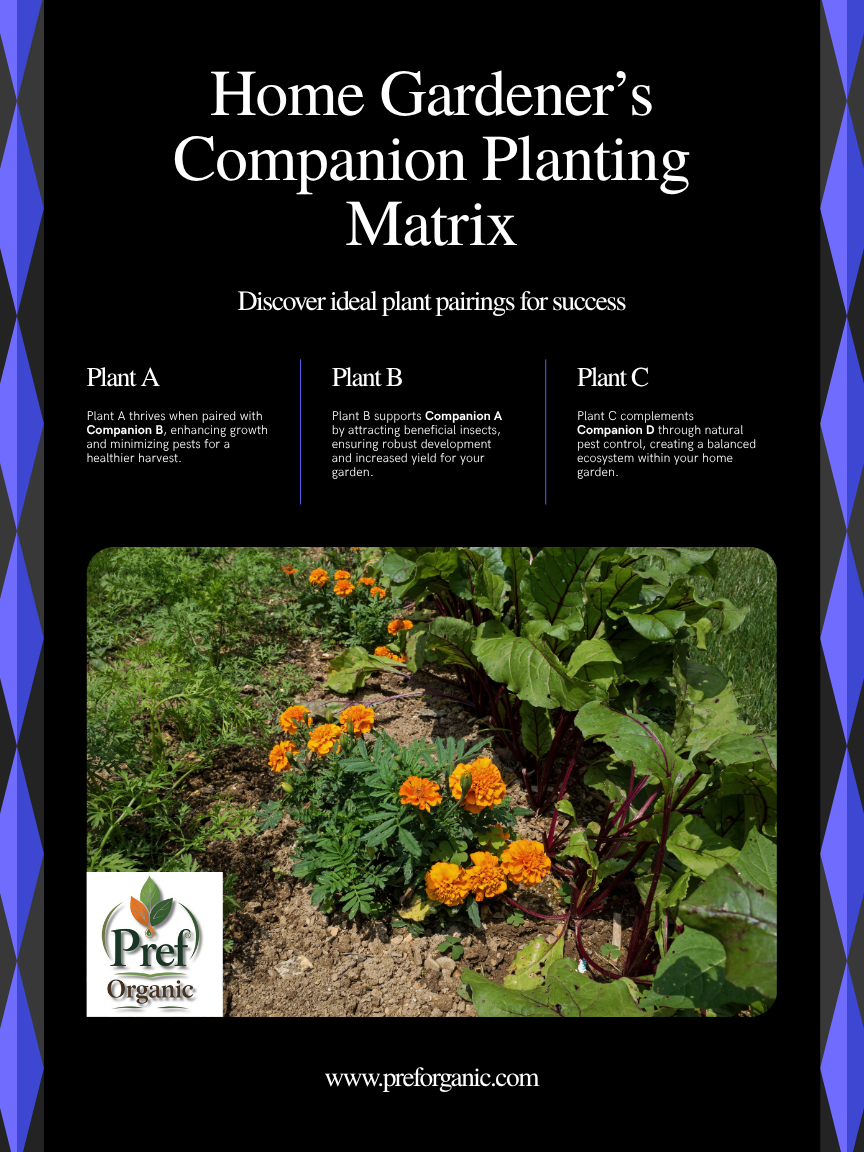ATTENTION HOME GARDENERS WHO WANT TO GROW FOOD WITHOUT POISONING THEIR YARD
"A New Approach Turns Pest Problems into a
Healthier, Thriving Garden Faster Than You Think."
Now You Can Defend Your Plants — Without Chemicals —
While Growing Stronger Produce, Creating a Safer Yard, and Supporting Nature…
All in One Method That Works With, Not Against, Your Soil
The truth is, bugs invade even the most well-protected gardens.
BUT: you don’t have to trade your health for tomatoes.
You don’t need to soak your soil in toxins just to save your squash.
There’s another way — one that works and actually makes your garden better over time.
You see, most backyard gardeners try to stop infestations with the same handful of sprays — again and again — hoping this time the pests won’t return.
But they always do.
Stronger. Hungrier. And your ladybugs? Gone.
Your butterflies? Silent.
That’s because nearly everything sold as a “solution” is built to deliver quick results... no matter the long-term cost to your soil, your environment, or your food.
But if you use just one method — one spray, one trap, one trick — you’re always reacting.
Never preventing.
And definitely not building the kind of self-protecting, pest-resistant garden you dreamed of.
You’ve likely been told that only chemicals can handle infestations.
That a healthy garden can’t defend itself.
That nature needs your help...
The opposite is true.
When you weave together a simple mix of natural tactics — the right timing, smart plant choices, and beneficial insect allies — you’ll control pests without wrecking your ecosystem.
You’ll create a garden that feeds your family better meals.
You’ll support the bees and birds that actually help control outbreaks.
You’ll stop paying for chemicals that never keep pests away for long.
You’ll spend less time treating — and more time harvesting.
And here’s what makes this different: this approach doesn’t depend on one miracle spray.
It builds a thriving system that strengthens with every season.
That’s why this letter matters.
You’ll see how a garden can protect itself — and why the belief that chemical sprays are “necessary” is not only wrong… it’s what’s keeping your garden from its full potential.
Keep reading — and everything will shift.
You DON’T need a toxic toolkit to outsmart garden pests
Forget the conventional ways.
You don’t need hazmat suits, shelves of pricey sprays, or a degree in entomology to manage your garden.
That whole routine—the one where you douse your backyard with chemicals at the first sign of a beetle?
It’s not just exhausting.
It’s broken.
You see, the conventional method traps you.
The false belief that more poison equals more protection is a lie that keeps you spending more money… while your garden’s health slips further away.
What no one tells you is how those same “quick-fix” sprays wipe out the very allies your garden needs—ladybugs, lacewings, pollinators—all casualties in the war you didn’t mean to start.
Now your garden is weaker.
The pests are back.
And you’re stuck in an expensive, endless loop.
That “spray now, ask later” mindset? It’s doing more harm
than pests ever could
Chemical bombardments don’t build strong gardens.
They create fragile ones.
Every blast silences the natural defenses that would otherwise thrive—soil microbes, predator bugs, healthy biodiversity.
And yet, you’ve been led to believe that skipping the chemicals means surrender.
That if you don’t go nuclear, you’ll lose the whole crop.
But the truth? You don’t need to choose between pest control and garden health.
You’ll defeat pests better when you stop trying to do it
all with one weapon
Throwing a single tactic—chemical or homemade—at a complex ecosystem doesn’t fix the real issue.
It’s like chasing one leak with a bucket while the whole ceiling caves in.
Healthy gardens fight back because they’re built to.
When you learn to support that system—rather than poison it—nature starts pulling its own weight again.
Your garden gets stronger.
You grow richer, tastier, safer food.
And you stop feeling like the only line of defense between your plants and destruction.
You won’t need to spray.
You won’t need to guess.
You won’t need a chemistry set.
All you need is a smarter way to grow.
Sustainable Gardening Starts Where Sprayers Fail
Sustainable Gardening isn’t just a trend—it’s how lasting garden health begins.
Not with sprays.
Not with traps.
And definitely not with bottles of toxic guesswork.
You see, for over a decade, I’ve studied how synthetic shortcuts promise control—but deliver dependence.
Crops weaken.
Soil degrades.
Resilience disappears.
I’ve seen it firsthand as yields fell, pests adapted, and chemical cures turned into long-term crutches.
That’s why this solution is different.
It’s called Integrated Pest Management, but not in the clinical, complicated way most people talk about it.
This version is field-tested, home-proven, and grounded in real results—crafted especially for everyday gardens that crave balance, not battle.
You’ll guide your garden through a system that harnesses nature’s own checks—beneficial insects, companion planting, and smart timing—while phasing out chemical reliance entirely.
You’ll break the cycle that keeps you spraying, hoping, and watching pests return stronger than before.
Because the truth is, single-method control doesn’t control much at all.
It disrupts.
It weakens.
It teaches you to chase problems rather than prevent them.
That’s the lie too many home gardeners believe: that stronger chemicals mean stronger protection.
But the opposite is true.
By mixing methods—biological, cultural, mechanical—you create layers of defense that pests simply can’t crash through.
And while others keep repeating what doesn’t work, this guide shows what few others can: a clear path away from chemicals without sacrificing productivity.
You won’t find this in generic garden books or on labels backed by pesticide giants.
Because the goal of this system isn’t repeat sales.
It’s independence.
And it works whether you’ve got a backyard bed or a small balcony full of pots.
If you’ve ever watched your summer squash succumb to beetles or seen aphids rally around your roses no matter what you sprayed, this system was built for you.
You’ll see fewer pests in weeks.
More birds, bees, and butterflies.
And plants that stop surviving—and start thriving.
This isn’t just a method.
It’s how gardens finally fight back—and win.
Here’s how it works — in 4 parts
Each one builds on the last to give you a garden that thrives—without chemicals, without chaos, and without second-guessing when a bug shows up.
Let me walk you through them...
PART 1: Build a Garden That Fights Back
If you’re tired of pests coming back no matter what you try, this is where it all turns around.
You’ll set up your garden to work like nature intended—with healthy soil, smart crop placement, and the right plants in the right places.
You’ll use time-tested but underused practices like crop rotation, clean-up routines, and spaces that support insect allies.
You break the pest cycle before it starts.
You attract the kinds of bugs that eat the bad ones.
And you grow tougher, stronger plants that don’t fold under pressure.
This is your foundation—the part that makes the rest effortless.
PART 2: Decode the Signals
Once your foundation is solid, it’s time to scout like a pro.
Now you learn how to watch your garden the right way—so you know what to do, when to wait, and when to act.
You won’t panic when a beetle or worm shows up, because you’ll recognize what matters—and what doesn’t.
You stop problems before they explode.
You cut the guesswork and delay.
You make fast, calm decisions—guided by nature, not fear.
This part gives you confidence.
You’re in the driver’s seat now.
PART 3: Strike Without Scorching
When pests cross the line, you don’t spray.
You switch to smart layered tactics that hit hard—without harming predators or pollinators.
You’ll follow tailored strategies for the five major garden pests, starting with physical and cultural tools and finishing with natural aids if needed.
You shrink pest numbers fast—without killing the good bugs chasing them.
You act with precision—targeting the problem, not the whole garden.
You stay in control, even when things spike.
This part keeps pest pressure low and your ecosystem balanced.
PART 4: Stay Ahead — Month by Month
Now it’s time to put everything into motion—season by season.
This section walks you through what to do, and when, across the whole year.
You’ll plan, tweak, and act with ease—automating resilience into your garden instead of reacting when it’s too late.
You’ll prevent surprises before they happen.
You’ll stay ahead, even when life gets busy.
You’ll run a garden that renews itself, month after month.
You don’t just get systems—you get rhythm.
With these four parts working together, you’ll grow a truly self-sustaining home garden—one that beats pests, supports nature, and grows stronger every season.
“But I Don’t Have a Big Garden…”
That’s fine.
In fact, smaller gardens often respond faster to sustainable pest solutions.
You’ll spend less time chasing problems and more time noticing real progress.
These natural strategies scale beautifully — whether you're on a balcony with 4 planters or tending a backyard plot the size of a tablecloth.
“But I’m Brand New to Gardening…”
Perfect starting point.
You won’t need to ‘unlearn’ the chemical shortcuts that often wreck long-term soil health.
You’ll grow with the system.
From day one, you’ll apply simple, proven methods that build stronger crops, fewer infestations, and richer soil — without needing a degree in entomology.
“But I Don’t Know Much About Pest Control…”
You won’t need to.
Every step is laid out clearly.
You’ll follow a handful of easy techniques that work together — like planting smart, attracting helpers, and blocking pests before they break out.
No guesswork.
No complicated equipment.
Just a basic plan that works with nature, not against it.
“But I Thought Natural Pest Control Doesn’t Really Work…”
You’re not alone.
Many people believe chemicals are the only real solution.
But they only treat symptoms, not causes.
These methods disrupt balance and invite even more pests down the line.
On the other hand, sustainable tactics create resilience.
They work slower at first, but stronger in the long run.
You’ll see fewer infestations, healthier plants, and a garden that gets better season after season — not worse.
“I Just Don’t Want It to Be Overwhelming…”
That’s why this approach breaks it down into actions anyone can handle.
You’ll never need to overhaul your setup overnight.
You’ll try one thing.
Then another.
You’ll repeat what works.
Over time, your garden becomes smarter, more self-reliant — producing food your family loves, in soil you trust.
You see, you don’t need to be an expert or own a farm to grow safe food without chemical sprays.
You just need the right plan — built on methods that work with nature, not against it.
Let’s take a moment to review what we’ve uncovered so far
• If you want a healthy, thriving garden that resists pests season after season, you need more than sprays, traps, or guesswork. You need a plan — a framework that works with nature, not against it.
• The single biggest trap to avoid is relying on one method — especially chemical ones. Doing so not only weakens your garden over time, but also invites pest resistance and ecological harm.
• The real breakthrough lies in a multi-layered system — one where you blend smart observation, cultural controls, physical barriers, and biological allies to handle pests before they overrun your plants.
• This framework is proven in both scientific research and field practice — and now, you’ll have access to the guide that brings these principles into your own backyard.
Introducing
: "The Home Gardener’s IPM Blueprint: A Step-by-Step System to Outsmart
Pests Without Chemicals"

A complete, easy-to-follow system to grow produce and flowers free from toxic sprays or complicated routines.
I didn’t invent this idea in isolation
This method wasn’t born in a lab or dreamed up in an office. It was shaped by lived experience — in fields, gardens, and agricultural communities where real resilience is tested.
Growing up in Pakistan’s countryside, I saw firsthand the costs of chemical dependency.
Later, as a public servant and agricultural scholar, I worked with farmers facing ruin from pesticides that once promised salvation.
Decades of learning from traditional farmers, sustainable agriculture researchers, and my own hands-in-the-soil trials helped me design the resilient garden system you’re about to use.
This isn’t theory.
It’s real.
It’s grounded.
It works.
Trying it alone may leave you overwhelmed and uncertain
It’s tempting to try piecing things together from the internet — reading blogs, asking around, trying a little bit of this and that.
But scattershot efforts often bring scattered results.
Without a clear structure, you may end up using methods that conflict — or skip vital steps that let pests bounce back even stronger.
This book gives you the framework, not fragments.
It tells you exactly what to do and when, in a way that makes sense — even if you’re new to gardening or dealing with your first infestation.
A fair warning before you dive in…
Not every gardener is ready.
I won’t pretend this guide is suited for everyone. So let’s be clear about who shouldn’t pick this up:
• If you’re looking for a quick spray-and-forget fix — this isn’t it. We don’t mask problems here. We solve them at the root.
• If you're set on using chemical shortcuts — you won’t find that here. This guide offers chemical-free methods only.
• If you think a healthy garden just “happens” — you’re in for a surprise. This system asks you to observe, act thoughtfully, and stay involved. Simple, yes. Passive? Never.
• Or if you’re not actually planning to try the methods — it’s better to wait. This isn’t a read-once-and-forget kind of book. This is for those who want real results, and are ready to act.
Don’t mistake simplicity for weakness
This system will feel surprisingly straightforward.
And that’s the beauty of it.
That’s because I took years of field-tested knowledge and turned it into clear, step-by-step guidance you can use right now — no fancy equipment, no special training required.
You’ll follow a rhythm that aligns with your garden’s needs, not a rigid schedule.
You’ll work with your environment, not against it.
You’ll gain confidence with every pest challenge you meet head-on.
That’s how you grow stronger plants, healthier soil, and a garden that takes care of itself in the long run.
Sarah Perkins told us, "I never thought gardening could be this easy and fun. My backyard is now my favorite place!"
Imagine stepping out your back door into a lush, thriving garden that your whole family helped grow.
That’s the kind of joy and transformation Sarah experienced—making her backyard the go-to spot for peace, play, and homegrown goodness.
James Carter shared, "This changed the way we eat. Our kids now prefer veggies from our own garden!"
Picture your children choosing carrots over candy—because they helped grow them.
For James and his family, mealtime became meaningful, and their garden became a source of pride, flavor, and health.
Maria Lopez said, "I used to kill every plant. Now I'm growing enough produce to share with neighbors!"
Maria went from feeling defeated by her garden to feeding her community from it.
The shift wasn’t just in her soil—it was in her confidence, her pantry, and her neighborhood relationships.
Ethan Nguyen wrote, "I'm saving money and reducing my carbon footprint thanks to this."
Think about the freedom that comes from cutting grocery bills while doing right by the planet.
Ethan isn’t just eating fresh—he’s living the sustainable dream.
Rachel Kim shared, "My stress melts away when I step into my garden now. It’s therapy with tomatoes."
Now imagine your garden not just feeding your belly—but healing your mind.
For Rachel, gardening became a daily dose of calm, growth, and joy.
Liam Walker told us, "We're teaching our kids where food really comes from. It’s a gift to watch them learn."
For Liam, it wasn’t just about farming—it was about family.
Sharing the miracle of growth with the next generation, making memory-rich moments from seed to supper.
Grow food. Grow joy. Grow closer.
All across the country, home gardeners just like you are transforming their backyards, their meals, and their lives.
And this is just a glimpse of the stories pouring in every day.
And the price...?
I kept the price at $29.99 because I want every home gardener to have access to sustainable, chemical-free methods that actually work.
This is a real, complete framework.
Not a blog post.
Not a recycled checklist.
It’s a field-tested guide designed to help you reduce pest damage and support a vibrant garden—all without spraying a single harmful chemical.
And because it’s a downloadable e-book, I’ve skipped the glossy packaging and distributor markups. That lets me pass those savings on to you, directly.
The truth is, I’ve put in the legwork—years of trial, error, and success pulling together proven, science-backed strategies from regenerative growers, experienced horticulturists, and my own work in sustainable gardening.
I’ve distilled everything into a clear, easy-to-use framework you can follow to build a strong, self-regulating garden ecosystem.
A space where good bugs thrive.
Plants stay healthy.
Pests struggle to take hold.
So for under thirty dollars, you get all of that.
And not some long-winded theory, either—this is actionable guidance that gets results you can see within weeks.
That’s a value I’m proud to offer... for now.
And I stand behind it fully

I genuinely believe this is the most practical, efficient way to cut your garden’s pest pressure without turning to toxic sprays.
So here’s my solid guarantee:
Use this framework in your garden.
Apply the methods.
Follow the system.
If you don’t see healthier plants, fewer pests, and more beneficial insect activity within a few weeks... I’ll return every penny.
Or if you find the format unhelpful or hard to follow—same promise. Full refund. No questions.
I’ve built this to serve real gardeners who want real results and less frustration.
You’ll either love it or get your money back.
Simple as that.
One more thing...
To make this a total no-brainer, I’m tossing in three bonuses you’ll actually use.
Not filler fluff.
Real stuff:
Pest Damage Cheat Sheet valued at $14.00...yours FREE

Cheat sheet helps identify pests responsible for common plant damage. Match symptoms like yellowed leaves, severed stems, or large holes to likely culprits and learn where to find them on your plants.
Picture this: You walk into your garden and see wilted leaves or holes in your lettuce. Instead of guessing, you pull out this cheat sheet and instantly know it’s cutworms – you start hunting at the base of the plant and take action that same day.
15 "Insectary" Plants valued at $14.00...yours FREE

Insectary plants like Sweet Alyssum, Dill, and Cosmos to attract beneficial insects such as ladybugs and hoverflies. These "garden wonders" provide natural pest control, creating a resilient and thriving garden ecosystem without chemical sprays.
Imagine planting clusters of dill and watching your garden come alive with buzzing hoverflies and ladybugs that devour aphids for you. It’s like having a tiny army working 24/7 to keep your vegetables safe – and you didn’t need a single drop of pesticide.
Companion Planting Matrix valued at $14.00...yours FREE

For a healthier, more successful home garden, use this companion planting guide. It identifies "Good Companions" that help deter pests and "Bad Companions" that can inhibit a plant's growth or attract the same pests.
You plant basil next to tomatoes and suddenly notice fewer hornworms and healthier growth. A quick glance at the matrix saves you from pairing beans and onions – avoiding issues before they start by knowing exactly who should grow next to who.
Before You Leave This Page, There's Something You Deserve
To Know…
I’ve been straight with you this entire time, and I’m not about to sugarcoat this now.
If you pass on this, here's what you're really choosing:
You’re choosing to stay stuck in that frustrating loop — where pests win, season after season.
You’re choosing to stand by as your garden suffers — yellowing leaves, stunted harvests, wilted flowers — all while spraying the same chemicals you hoped to avoid.
You’ll keep spending more for less — more money on toxic treatments, less joy from your garden.
Even worse, you’ll be handing over control of your food, your soil, and your health… to the very systems you wanted to break away from.
All the while, you’ll still be wondering:
“Why can’t I keep my garden healthy… without poisoning everything?”
But that doesn’t have to be your story.
When you step into “The Home Gardener's IPM Blueprint: A Step-by-Step System to Outsmart Pests Without Chemicals”, everything changes.
You’ll take back control of your garden — and your peace of mind.
You’ll break free from chemical cycles and finally manage pests in a way that supports life, not destroys it.
You’ll grow with confidence, knowing how to spot threats early, respond naturally, and protect your plants — all while building a resilient ecosystem right outside your door.
You’ll uncover what “pest management” really means — and gain lifelong skills that empower you with every seed you sow.
This isn’t just theory.
This is real.
This is proven.
The knowledge in this framework is practical — strategies that work, tools you’ll actually use, and methods you’ll return to season after season.
And today — it’s only $29.99.
Yes — for the price of one overhyped bag of fertilizer, you’ll access priceless knowledge.
And because Saqib Ali Ateel stands behind every inch of this system with a rock-solid guarantee, the only real risk is walking away and continuing the cycle you’re in now.
You’ll also receive exclusive bonuses valued at $42 — practical additions that enrich and elevate every lesson in the core framework.
This offer won’t be here forever.
Each season lost is another garden surrendered.
Another chance gone.
Another harvest ruined.
But you can make a new choice — today.
When you say yes, you’ll…
• Support every plant with a thriving, living defense system
• Use fewer chemicals and still manage even the toughest infestations
• Learn to read your garden like a pro — and stop problems before they explode
• Build a growing environment that can handle droughts, pests, and surprises — naturally
• And so much more…
Get The Framework Today For Just $29.99
Tap the “Buy Now” button and access your discounted price...
PLUS Bonuses Worth $42!
Don’t miss this — it disappears the moment this page closes.
Yours for a stronger, greener garden,
Saqib Ali Ateel
P.S. — Every moment you delay is a missed chance to restore balance to your garden.
If you’ve ever said, “I just want to grow without the chemicals,” this is your moment.
P.P.S. — This isn’t guesswork. This is a proven system backed by experience and delivered with practical steps. And with your full-money-back guarantee, there’s no downside.
Click the “Buy Now” button below…
Start managing pests — the sustainable way — today.
